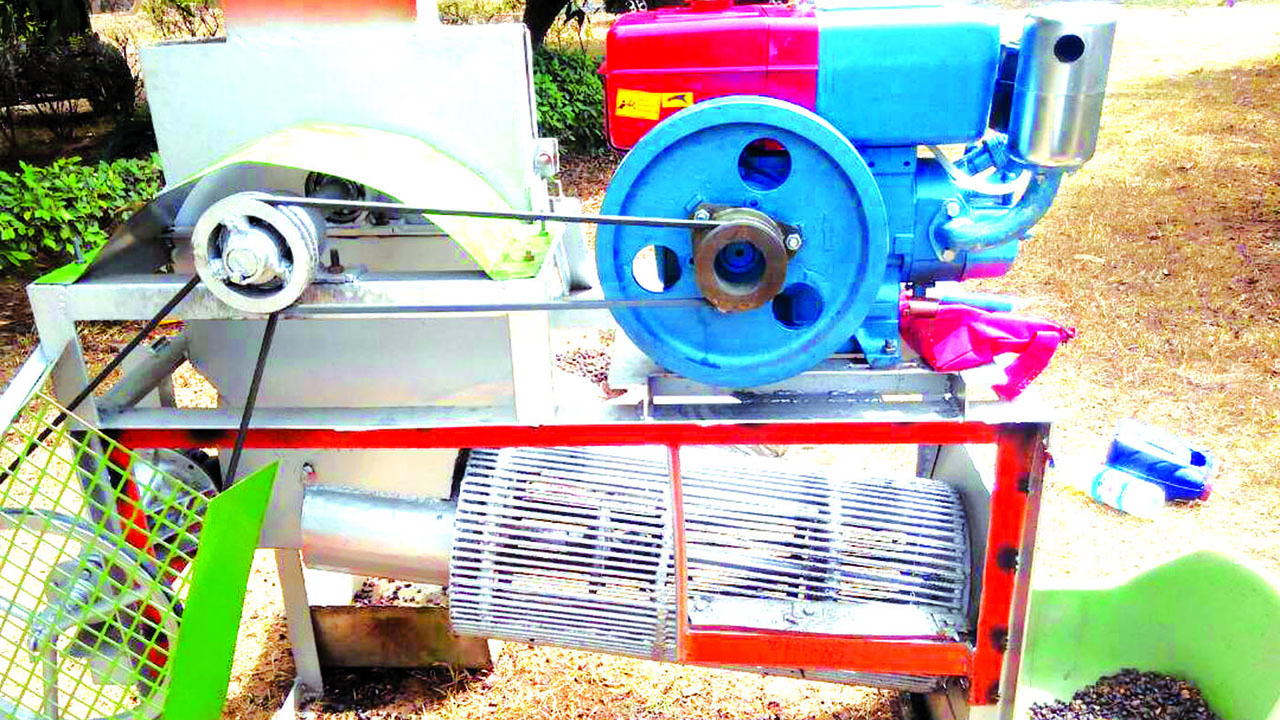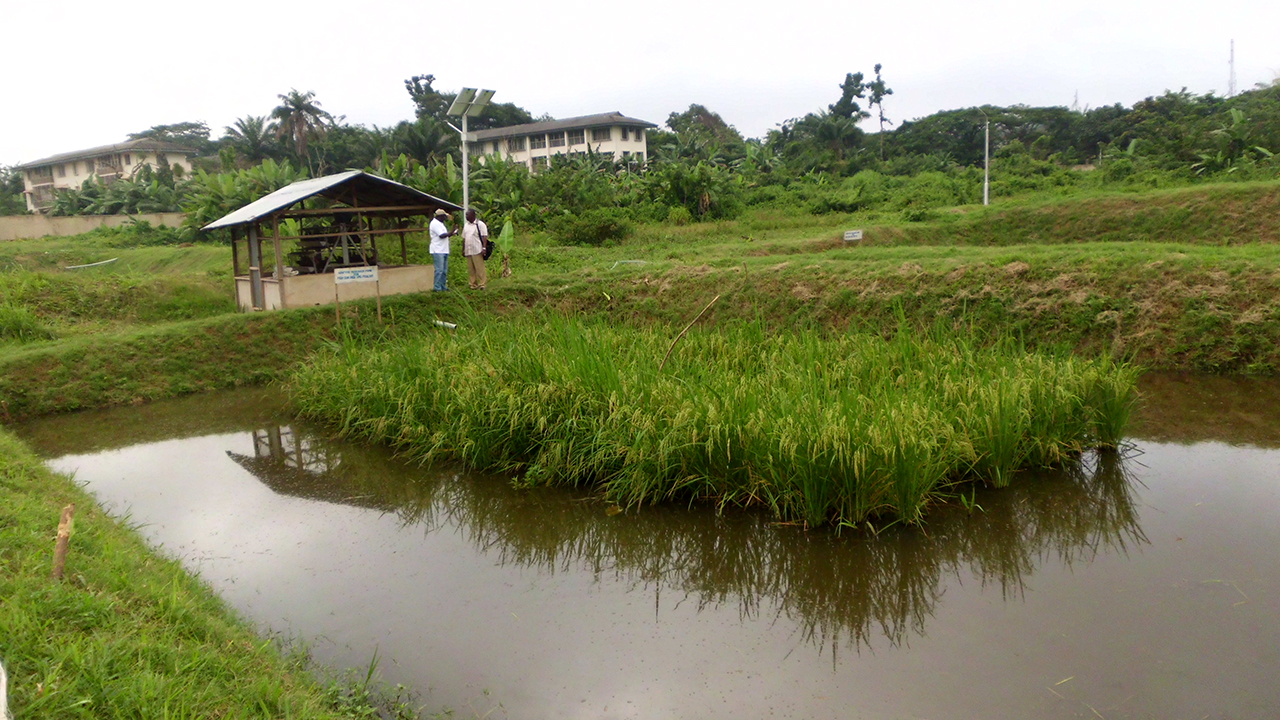![]()
Charcoal bags
FEMI IBIROGBA writes on intensified charcoal production in Nigeria and consequences such as increased solar radiation, climate change, flooding, erratic rainfall patterns and effects on food production
Concerned Nigerians have raised the alarm over dangers associated with wanton destruction of the forest in the names of charcoal production and other economic exploitations of the forest.
Diversified use of kerosene for domestic cooking and aviation fuel has made the pump price of the product unaffordable to average Nigerians, and price of cooking gas, too, is high for the majority. A litre of kerosene hovers around N250 while a kilogramme of cooking gas is around N320.
Similarly, the drive by the country, by extension the Nigeria Export Promotion Council, to diversify the export base from oil unwittingly approves the reckless destruction of the forest. The desire to earn foreign reserves through export, including charcoal, and the move towards food and crop productivity in a clean and green environment are not only paradoxical but also absurd, considering the threats the situation poses to humans, wildlife, the forest and the globe at large.
Hence, the search for cheaper energy sources and inexpedient drive to export anything have escalated the depletion of the forest, global warming, natural disasters of floods and flooding, excessive and erratic rainfalls, to mention but a few.
Again, foreign demand for charcoal has led to intensification of tree felling, deforestation, charcoal production and export.
One Muzbau Jimoh, a Mechanical Engineering graduate of the University of Ilorin, who was an agent to one of the companies sourcing charcoal from Kwara, Kogi, Oyo and Niger states for export to India, China and Saudi Arabia, reliably informed The Guardian that about 200 metric tonnes were purchased in a month, and that about nine other companies were sourcing the same or more quantity of charcoal from the states simultaneously.
Conservatively, 12,000 metric tonnes of charcoal are produced in Kwara alone, implying that about 48,000 metric tonnes of the product are produced in just four states in six months. The core north also produces charcoals in thousands of tonnes despite the increasing solar radiation in the zones.
Jimoh admitted that the activities, which usually begin at the outset of a dry season to the beginning of another raining season, were threatening the semi-arid regions in the North Central geo-political zone, and increasingly, desert creation prevents intensive crop production.
For about six months or more, trees are felled, processed into charcoals and shipped outside the country recklessly, leaving some people smiling to the bank, while the earth is heated against all.
Professor Albert Olayemi of the Regional Centre of Expertise on Education (RCE) for Sustainable Development disclosed recently that Nigeria loses its forests at the rate of 11.1 per cent annually, making it the highest on earth.
From the forest ecologies of the South to the semi-arid regions of the North Central and core North, tree felling for building construction, furniture making, charcoal production and other economic uses is, no doubt, on the massive increase.
Dr Oladapo Olukoya, Acting Head of Department, Department of Forestry and Wildlife Management, Federal University of Agriculture, Abeokuta (FUNAAB), while affirming the intensity of charcoal use and forest depletion, told The Guardian that in the north, some academics and the rich cooking with charcoal believe that when they cook with charcoal, the food would be tastier, unlike with kerosene or gas.
Olukoya, however, says whatsoever affects the trees affects the animals and also the entire ecosystem, adding that when wood is burnt and the natural carbon dioxide and oxygen interchange is disrupted, it destroys the ozone layer, which increases heat and hence, evaporation increases, sea level and flooding also increase.
Dr Kayode Ogunjobi, Forestry Department, FUNAAB, said charcoal production had been going on for some time, but unfortunately, most people that go into the forest to harvest trees for charcoal production do it indiscriminately.
“We are not practicing the principle of sustainability here because we fell trees without replacing them. You will see that the trees we have been using over the years are the ones that were planted in the last couples of decades or more. Now, everybody goes there to harvest without replanting. So, this is one of the problems,” Ogunjobi lamented.
Dr Sunday Aladele, Executive Director of the National Centre for Genetic Resource and Biotechnology (NACGRAB), told The Guardian that “Charcoal production is depleting the forest. The government has to wake up and checkmate the trend. We are killing the future of the country. Necessary legal enforcement must be done by the government.”
Cumulative consequences
Science has proved that Ultraviolet B (UVB) radiation, caused by depletion of the ozone layers, affects the physiological and developmental processes of plants. Despite mechanisms to reduce or repair these effects and an ability to adapt to increased levels of UVB, plant growth can be directly affected by the radiation.
![]()
Charcoal lump
Changes in plant form, how nutrients are distributed within the plant, timing of developmental phases and secondary metabolism might be equally or sometimes more important than damaging effects of UVB. These changes do have important implications for plant competitive balance, plant diseases resistance and crop protection.
Rainfall patterns in the savanna ecologies in the country have become so erratic and fluctuating that farmers hardly plant two seasons of bi-annual crops like maize. Maize production is of great economic importance not only for human consumption and industrial utilization, but also in animal feeds production.
A farmer in Oke-Ogun area of Oyo State, Mr Tunde Orodeji, had earlier told The Guardian that grain farmers in the area could only plant one round this year, as against two usually planted before now. He lamented that the only batch of maize planted this year also suffered setbacks from inadequate rainfalls and army worms infestation, making farmers to become pessimistic about their yields and profitability.
Inadequate local maize production means massive importation of the grain, and by extension, exporting jobs and wealth to other countries, when Nigeria is ranked as a country with highest number of extremely poor people in the world.
A maize breeder, Professor Samuel Olakojo, had earlier said poor maize production in Nigeria would have inflationary impacts on cost of producing poultry products and maize-based staples, threatening food availability and security.
Similarly, yields of beans, sorghums, millets and other grains are grossly affected with erratic or inadequate rainfalls, especially in a less mechanised and rain-fed agricultural systems like Nigeria.
Phytoplankton forms the foundation of aquatic food webs and scientific evidences have proven a direct reduction in phytoplankton production due to ozone depletion-related increases in UVB.
Solar radiation has been found to cause damage to early developmental stages of fish, shrimp, crab, amphibians and other marine animals. The most severe effects are decreased reproductive capacity and impaired larval developments.
Heat radiation explosions, therefore, could result in population reduction or extinction of small marine organisms with implications for the whole marine food chain.
Professor Kolawole Adebayo, while speaking with The Guardian on the issue, described charcoal production as debilitating and counter-productive. The felling of trees, he argues, adds to negative climate change, for the trees are supposed to release oxygen to and take carbon dioxide from the atmosphere. The second level, as Adebayo says, is that production of charcoal releases a lot of carbon monoxide and carbon dioxide into the atmosphere, heating up the globe and affecting vegetation, the wildlife and humans.
Way forward
Olukoya, while revealing the steps to remedy the situation, said the way forward is orientation of people to engage in reforestation of Africa. “Let’s encourage more people to plant trees. Though they are planting, the rate at which they do it is not the same with the rate they fell it,” he said.
He argued that if people could be educated to do massive reforestation and primary and secondary schools students are also mobilised, which could be via practical curriculum, the culture of replenishing the earth could be re-cultivated.
Alternatively, Ogunjobi suggested production of briquettes made from sawdust, which, as he said, “implies a safer fuel. There is a way of converting the sawdust to something else.”
He argued that rather than dumping sawdust carelessly to constitute a nuisance, people should produce briquettes to cook. To him, there would be no need to fetch woods for charcoals, and jobs could also be created in the process of producing briquettes.
He said: “The government and individuals should begin to look at how we can save our environment. There is a saying that the last man on earth will die when the last tree dies. So, why are we not planting?”
Aladele, the NACGRAB boss, called on the government to be proactive enough to stem the trend of tree felling by using law enforcement agencies to clamp down on illegal forest exploration. To him, though illegal charcoal production could provide a temporary relief for a few beneficiaries now, the long term effects would affect all and linger for generations.
Jimoh, the Mechanical Engineering graduate, was involved in sourcing charcoals for the company because he could not get a job after years of graduation, and acquiring welding skills had little financial impact. Hence, he urged the government to aggressively create more jobs, and make business environment more conducive for investments so they can survive and create job opportunities for young grads.
With these, he argued, some people who were forced to exploit the forest illegally would find alternative means of livelihood, and the tree felling would reduce.
Proffering solutions, Professor Adebayo said: “There are three things we can do to stem the trend. One, we can increase the level of energy in the country. People use charcoal to generate heat energy, and if we improve electricity generation, more than 30% of the charcoal will not be necessary.”
The second thing, he added, is that if electricity is difficult, Nigeria should increase gas production for cooking; saying if gas is cheaper, domestic users would use it for cooking rather than charcoal.
Another solution, he suggested, is that a person should be made to plant 10 trees to replace one felled, and with this, the net loss of the forest would be taken care of by new trees.
The government should consider establishment of community forest guards to train charcoal makers how to replenish the forest, and prevent unauthorised tree felling as part of the way forward.
He strongly believed that export of charcoal could be controlled with good policies to make export of the product expensive. Excess gas could also be exported to the countries sourcing charcoal in the country because it is a cleaner and better energy for them and us.
Carbon emissions from vehicles, gas flaring, industrial emissions and forest depletion through charcoal production are all heating up the ecosystem, warming up the atmosphere, and harping on the clarion call to save the world and make it a better place for all.






 The programme Coordinator, Technology for Africa Agriculture Transformation [TAAT], Mr. Crist Akem, has revealed that Nigeria, and other African countries with keen interest in fish, soya beans, cassava, vegetables and cocoa production can now assess the $120 million seed money put together by the World Bank, African Development Bank and the Bill and Melinda Gate foundation to boost agriculture the continent
The programme Coordinator, Technology for Africa Agriculture Transformation [TAAT], Mr. Crist Akem, has revealed that Nigeria, and other African countries with keen interest in fish, soya beans, cassava, vegetables and cocoa production can now assess the $120 million seed money put together by the World Bank, African Development Bank and the Bill and Melinda Gate foundation to boost agriculture the continent



















